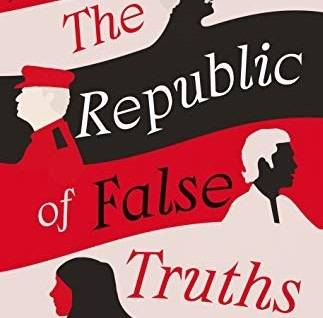
This article is a preview from the Spring 2019 edition of New Humanist
On 16 August, it will be 200 years since “the Battle of Peterloo”, a surprisingly little-known event that nonetheless became a landmark in the struggle for popular democracy in Britain. In an age characterised by frequently violent clashes between the state and its subjects, by government paranoia at the popular unrest unleashed by the example of the French Revolution, and by political organisation and activism among ordinary people in favour of their democratic rights, the events at St Peter’s Field, Manchester, still have the power to engage, shock and inspire.
Political power in the early 19th century was contingent upon social status. Even the burgeoning new wealth of industrialists and the growing middle classes did not bring access to a parliamentary system dominated by the landed gentry. Meanwhile, the rapidly growing population of urban industrial workers in centres like Manchester, transformed by mills, factories, mines and ironworks, lacked political representation and faced living conditions characterised by squalor, overcrowding and lack of sanitation. In their working lives, they were denied adequate wages and the right to form trade unions.
In the decades before Peterloo, the impact of the French Revolution had encouraged some sections of the British population to form societies to agitate for democratic representation. These “English Jacobin” groups were viewed with hostility by local and national authorities, and had to contend with often violent opposition from conservative “Church and King” mobs. The years after the French Revolution saw an increase in critiques of the British political system through a growing network of radical newspapers and mass public meetings. Protestors kept pace with the development of an industrial capitalist economy by moving away from localised conflict over the price or distribution of goods, and towards nationally coordinated demands for economic and social reform through political representation.
The tens of thousands of men, women and children who assembled on St Peter’s Field in August 1819 were drawn from industrial towns and villages all over Lancashire and beyond. They carried flags, French Revolutionary caps of liberty, and banners calling for Reform, Universal Suffrage and Equal Representation. Their meeting was one of a series of national rallies which had taken place in the years after 1815 as support for reform hardened. Henry Hunt, a talented radical agitator, was scheduled to give a speech at St Peter’s Field. The meeting had initially been called in the hopes of “electing” Hunt as popular representative for Manchester – a city which, like many highly populated and productive areas, was not entitled to a local MP. These mass assemblies could be powerfully emotive occasions but, as at Peterloo, the presence of women and children lent them a peaceful and celebratory atmosphere.
The government of Lord Liverpool, meanwhile, had spent the months leading up to the meeting stewing in fear of imminent French-style insurrection by the lower classes. Their anxiety had been stoked by the sensationalist reports of spies and informants, and by incendiary letters from magistrates in the provinces, not least around Manchester, who saw in the meeting of 16 August the potential for violent attacks on state and private property, and possibly worse, by the gathered crowd. The government and magistrates allowed the meeting to go ahead, but also marshalled a force of military, yeomanry, and special constables in the surrounding streets. Shortly after proceedings began, local magistrates sanctioned an armed response to the assembly, sending in the Manchester and Salford Yeomanry to arrest Hunt on the speakers’ platform and disperse the meeting. The yeomanry’s incursion into the unarmed crowd caused panic and confusion, with the regular cavalry sent in after them to clear the field. At the end of the day, 15 attendees were dead and over 600 injured.
While the bare facts of Peterloo are not disputed, historical opinion is divided over the allocation of blame for events – sometimes in ways that reflect contemporary debates on the policing of crowds and civil unrest. E. P. Thompson, in his 1957 essay “God & King & Law”, argues that the massacre, while not a premeditated conspiracy, was at least acceptable to a panicky government whose Home Secretary, Lord Sidmouth, was intent on seeking a public confrontation with the strengthening reform movement. Robert Walmsley, by contrast, spends Peterloo: The Case Reopened (1986) attempting to exculpate the Manchester magistrates and yeomanry by portraying the demonstrators as a volatile mob. Majority opinion tends to fall on Thompson’s side, attributing blame to the overreaction of the magistracy, if not to any deliberate action by higher government figures. Historians have also pointed out that yeomanry forces were mainly made up of local businessmen and property owners, a status which made them hostile to popular demands for reform or wealth redistribution.
In 1819, popular and political responses to the massacre were widespread and intense. The event was quickly dubbed “Peterloo” by James Wroe, editor of the local Manchester Observer. The play on words, combining the name of St Peter’s Field with the Battle of Waterloo which had taken place three years earlier, not only described the military’s role with piercing irony but more subtly highlighted the plight of soldiers who had returned from the trauma of war to unemployment and poverty. Many had consequently turned to campaigns for reform. The events generated anger and militancy among grassroots reformers, and caused many of the middle classes to look more sympathetically at the cause of reform, throwing their support behind its proponents in the Whig party.
Conversely, among uneasy local authorities and some of the propertied middle classes, Peterloo worked to restore some slight confidence in law and order. The government’s increasingly hostile responses to popular unrest continued with the “Six Acts”, passed in the winter of 1819, which restricted mass meetings and organisation and stifled the radical press. Despite this opposition, working class organisation continued, through both local industrial struggles and wider campaigns for political reform, with workers becoming more radical in their demands and chafing at the restraint urged by the reform movement’s middle-class leadership. The Chartist movement gave expression to this divide as it became the country’s first independent mass working-class political movement.
For the past two centuries, remembrance of Peterloo has been a political and cultural touchstone for many in the labour movement and for local historians and activists. In the 1960s, protest history emerged as a distinct field of study through the work of Marxist historians like E. P. Thompson, Eric Hobsbawm and George Rudé, all of whom stressed the significance of Peterloo. In the years since its inception, the energy and attraction of the academic study of protest declined as class identity and class struggle became decentred in academia and politics. The past decade, however, has seen a revival of interest in and growth of protest history, partly spurred on by a surge in visible popular discontent around the world. The bicentennial of Peterloo is marked not only by the release of Mike Leigh’s epic dramatisation of events, but also a graphic novel by the artist Polyp and a series of public memorials, including one by Jeremy Deller.
The events of 16 August 1819 have much that seems alien from a modern perspective, but many of the concerns surrounding the events are recognisably familiar, not least the demands for adequate living and working conditions and for political representation for ordinary people. This year’s commemorations can both pay tribute to a particular historical moment and stress that Peterloo continues to have contemporary resonance.

